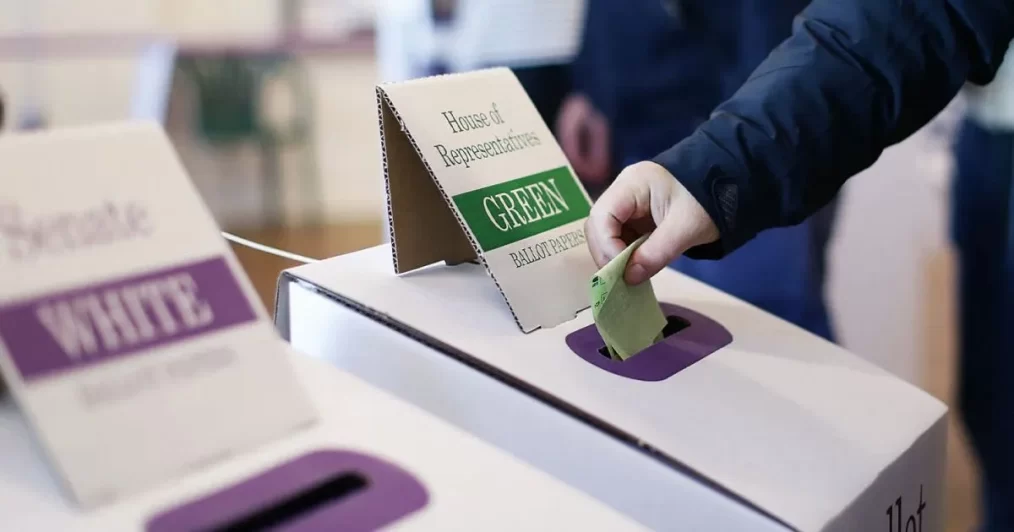
Who’s Better Off Than They Were Three Years Ago? No One.
As Australians prepare to head to the polls in 2025, one question lingers across kitchen tables, work sites, and pension queues: who is better off today than they were three years ago? For most, the answer is clear—nobody.
The cost of living has exploded into the number one issue for voters, displacing climate change, social justice, and even national security in the minds of the electorate. From surging grocery prices to eye-watering rent increases, everyday Australians are being squeezed harder than ever before—and there’s one factor driving it more than any other: mass immigration.
Australia’s housing market is now in full-blown crisis mode. Whether you’re buying or renting, the story is the same—there’s not enough to go around, and what is available is unaffordable.
At the heart of this crisis is a simple equation: immigration-fuelled population growth has dramatically outpaced the construction of new homes. In the past three years alone, over 900,000 new migrants have arrived in Australia, yet housing construction has failed to keep up. Local councils are swamped, infrastructure is lagging, and developers are facing spiralling costs due to labour shortages and inflation.
It’s basic supply and demand. More people, same number of houses—rents go up, house prices go up, and those at the bottom get pushed further out or onto the streets.
It’s not just housing. Australians are being smashed by rising costs across the board. Electricity bills are climbing. Fuel is expensive. Groceries are up nearly 10% over the past year alone, with essentials like bread, milk, and vegetables becoming luxury items for families doing it tough.
Pensioners are dipping into savings just to keep the lights on. Young people are stuck at home, unable to afford a place of their own. Families are making choices between paying rent and putting food on the table.
And yet, the national conversation continues to ignore the immigration elephant in the room.
Successive governments have relied on high immigration to prop up economic growth, cover workforce shortages, and support the ageing population. But this quick fix has come at a cost—one that’s now being paid by ordinary Australians in the form of higher rents, longer hospital wait times, crowded schools, and wages that can’t keep up with inflation.
The public know it. They see it every day when they struggle to find a GP, get stuck in traffic for hours, or are outbid on a rental by someone offering six months’ rent upfront. But few politicians have the courage to say what many are thinking: Australia’s migration intake is too high, too fast, and out of sync with the country’s ability to absorb new arrivals.
As the 2025 federal election campaign kicks into gear, voters are looking for more than slogans and photo ops. They’re looking for real answers. Cutting the red tape for home building won’t be enough. Subsidising electricity bills might buy temporary relief, but it’s no long-term solution.
Australians want a national housing plan that starts with reducing demand, not just increasing supply. That means taking a hard look at immigration numbers and aligning them with what communities can actually support.
While the media churns out daily polls and talking heads debate distractions, the real conversations are happening in homes across the country. Parents worrying about whether their kids will ever own a house. Workers wondering how they’ll survive another rent increase. Retirees watching their savings vanish.
In the end, this election comes down to a single question: Are you better off than you were three years ago? For the vast majority of Australians, the answer is a resounding no. And until we address the root causes—starting with unsustainable immigration—nothing will change.
It’s time for policymakers to stop ignoring the obvious and start putting Australians first.
ED: Five of our grandchildren are currently trying to buy their first home. We live in a regional area, not a major city. Back in the second quarter of 2022, the median house price in Tweed was $1,100,000, with units averaging $678,000. By the fourth quarter of 2024, the median house price had soared to $1,800,000, and the median unit price to $875,000. That’s a staggering $700,000 increase in just two years. Young people in their late twenties simply can’t save fast enough to keep up with the deposit requirements.




